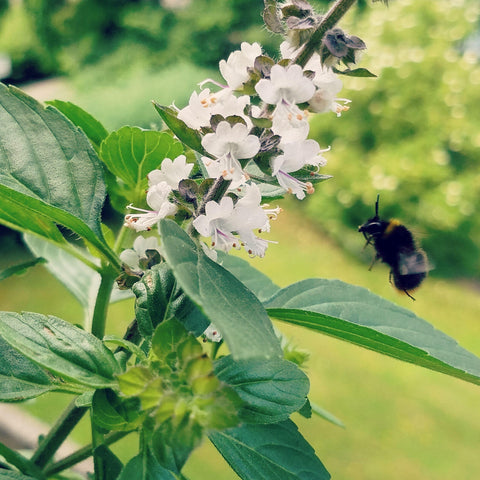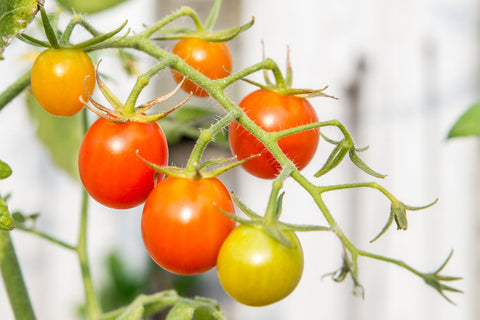Growing seasonal fruits and vegetables is not only a rewarding endeavor but also a sustainable and environmentally-friendly practice. By aligning your gardening efforts with the natural rhythms of the seasons, you can enjoy a diverse array of fresh produce while reducing your carbon footprint and supporting local ecosystems. In this comprehensive guide, we'll explore the benefits of growing seasonal fruits and vegetables, along with practical tips for extending the growing season and enjoying a year-round harvest.The following content also has some reference value for raised garden beds.
Benefits of Growing Seasonal Fruits and Vegetables
- Freshness and Flavor:
Seasonal fruits and vegetables are at their peak in terms of freshness and flavor, as they are harvested at the peak of ripeness and consumed shortly thereafter. Unlike their supermarket counterparts, which may travel thousands of miles before reaching your plate, seasonal produce is often sourced locally, ensuring optimal taste and nutritional value. From juicy tomatoes in the summer to crisp apples in the fall, there's nothing quite like the flavor of seasonal produce straight from the garden.

- Nutritional Value:
Seasonal fruits and vegetables are not only delicious but also packed with essential vitamins, minerals, and antioxidants that are vital for maintaining good health. Because they are allowed to ripen naturally on the vine or tree, seasonal produce tends to have higher levels of nutrients compared to produce that is picked prematurely and shipped long distances. By incorporating a variety of seasonal fruits and vegetables into your diet, you can nourish your body with a diverse range of nutrients and support overall well-being.
- Environmental Sustainability:
Growing seasonal fruits and vegetables promotes environmental sustainability by reducing the carbon footprint associated with food production and transportation. By sourcing locally-grown produce, you can minimize the energy and resources required to transport food from farm to table, thereby reducing greenhouse gas emissions and preserving natural resources. Additionally, seasonal gardening practices such as composting, mulching, and water conservation help to minimize waste and promote soil health, further enhancing the sustainability of your garden.
- Support for Local Economy:
Choosing to buy and grow seasonal fruits and vegetables supports local farmers and producers, contributing to the vitality of your community's economy. By purchasing produce from local farmers' markets or joining a community-supported agriculture (CSA) program, you can directly support small-scale farmers and artisans while enjoying the freshest, highest-quality produce available. Additionally, growing your own seasonal fruits and vegetables allows you to take control of your food supply and reduce reliance on large-scale industrial agriculture.

Practical Tips for Growing Seasonal Fruits and Vegetables All Year Round
- Plan Your Garden Layout:
Start by planning your garden layout and selecting the fruits and vegetables that are best suited to your climate and growing conditions. Consider factors such as sunlight exposure, soil quality, and available space when designing your garden beds or containers. Divide your garden into sections for cool-season and warm-season crops, rotating crops each year to prevent soil depletion and pest buildup. By carefully planning your garden layout, you can maximize space and optimize growing conditions for a diverse range of seasonal produce.
- Choose the Right Varieties:
Selecting the right varieties of fruits and vegetables is crucial for success in seasonal gardening. Choose varieties that are well-adapted to your climate and growing conditions, paying attention to factors such as heat tolerance, disease resistance, and days to maturity. Consider planting heirloom or open-pollinated varieties for their unique flavors and genetic diversity, or opt for hybrid varieties bred for specific traits such as disease resistance or high yields. By choosing the right varieties for your garden, you can ensure a successful harvest of seasonal produce year after year.
- Extend the Growing Season:
To extend the growing season and enjoy fresh produce for longer periods, consider implementing season-extending techniques such as row covers, cold frames, or hoop houses. These structures protect from frost and cold temperatures, allowing you to start planting earlier in the spring and continue harvesting later into the fall or winter. Additionally, planting cold-hardy crops such as kale, spinach, and carrots can help to ensure a steady supply of fresh produce throughout the cooler months. By extending the growing season, you can maximize your garden's productivity and enjoy seasonal fruits and vegetables year-round.

- Practice Succession Planting:
Succession planting involves planting crops in succession to ensure a continuous harvest throughout the growing season. Start by planting early-maturing crops such as lettuce, radishes, and peas in the spring, followed by mid-season crops such as tomatoes, cucumbers, and peppers. As each crop is harvested, replant the space with quick-maturing or cold-hardy crops to fill in the gaps and maximize yield. By practicing succession planting, you can make the most of limited space and enjoy a diverse array of fresh produce throughout the growing season.
- Preserve the Harvest:
To enjoy seasonal fruits and vegetables all year round, consider preserving the harvest through methods such as canning, freezing, drying, or fermenting. Canning is ideal for preserving high-acid foods such as tomatoes, fruits, and pickles while freezing works well for preserving vegetables, berries, and herbs. Drying is a convenient way to preserve herbs, fruits, and vegetables for long-term storage while fermenting is a traditional method for preserving cabbage, cucumbers, and other vegetables. Experiment with different preservation techniques to find the ones that work best for you, and enjoy the taste of summer all year round.
Conclusion
Growing seasonal fruits and vegetables is a rewarding and environmentally friendly practice that offers numerous benefits for gardeners and consumers alike. By aligning your gardening efforts with the natural rhythms of the seasons, you can enjoy a diverse array of fresh produce while reducing your carbon footprint and supporting local economies. By following these practical tips for growing seasonal fruits and vegetables all year round, you can create a thriving garden that provides a bountiful harvest of delicious, nutritious produce throughout the seasons. So roll up your sleeves, grab your gardening tools, and get ready to enjoy the seasonal sensations of growing fruits and vegetables in your backyard.









